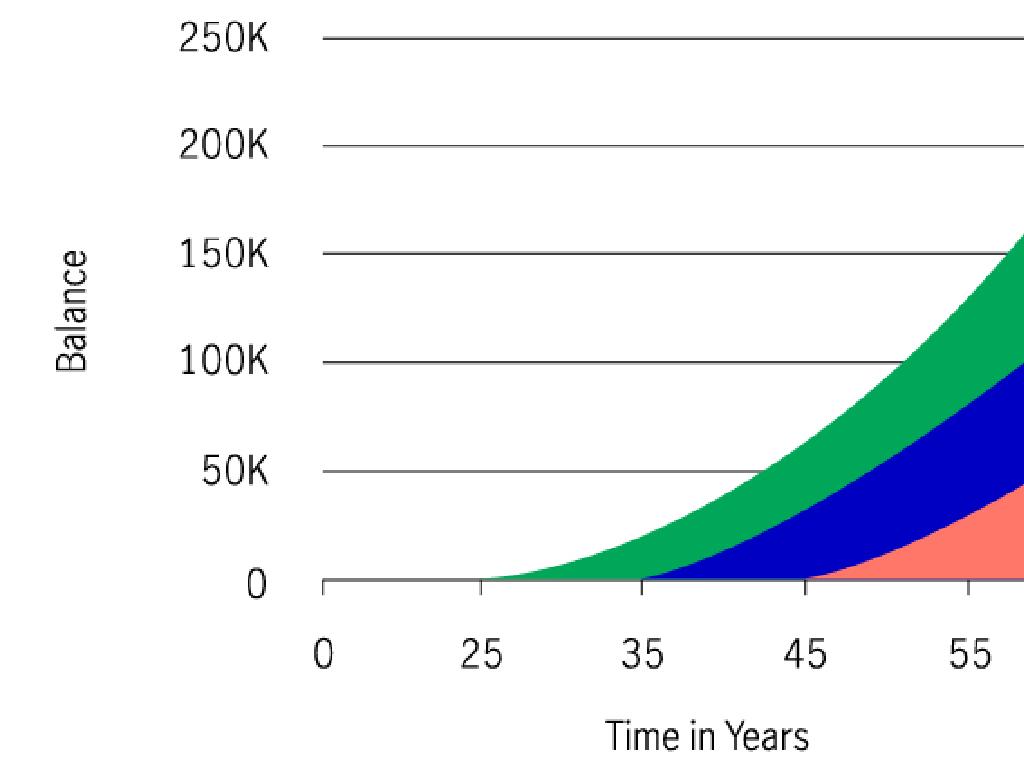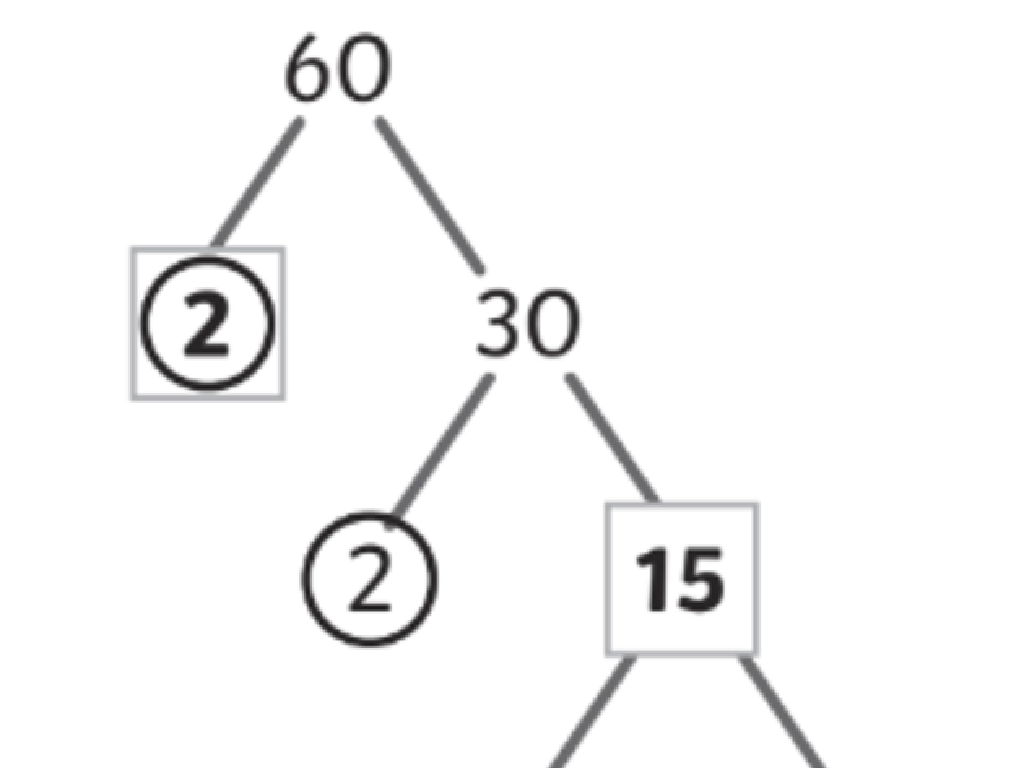Convert A Linear Equation In Standard Form To Slope-Intercept Form
Subject: Math
Grade: Eighth grade
Topic: Linear Equations
Please LOG IN to download the presentation. Access is available to registered users only.
View More Content
Converting Linear Equations: Standard to Slope-Intercept Form
– Recap linear equation basics
– Remember, linear equations form straight lines on a graph.
– Linear equations in real life
– Used in budgeting, speed calculations, and more.
– Objective: standard to slope-intercept
– Transform Ax + By = C to y = mx + b.
– Why slope-intercept form is useful
– It’s easier to graph and understand the rate of change.
|
Begin with a brief review of linear equations, emphasizing their structure and how they graphically represent a line. Highlight the relevance of linear equations in various real-life scenarios, such as calculating distances, budgeting, or predicting trends. The main objective of this lesson is to teach students how to convert a linear equation from standard form (Ax + By = C) to slope-intercept form (y = mx + b), which is a more intuitive format for understanding the slope and y-intercept of a line. Explain that the slope-intercept form is particularly useful because it directly shows the slope (rate of change) and the y-intercept (where the line crosses the y-axis), making it easier to graph and interpret the equation.
Converting Standard Form to Slope-Intercept Form
– Review of Standard Form
– Standard form is Ax + By = C, where A, B, and C are integers
– Identify coefficients A, B, and C
– A is the x-coefficient, B is the y-coefficient, C is the constant term
– Standard form equation examples
– For example, 2x + 3y = 6 is in standard form
– Steps to convert to slope-intercept
– Isolate y, divide by B, and rearrange to y = mx + b
|
Begin with a quick review of what standard form of a linear equation is and its general structure. Emphasize that A, B, and C are integers where A should be positive and A and B are not both zero. Provide clear examples of standard form equations and guide students to identify the coefficients A, B, and C in each. Then, demonstrate the process of converting a standard form equation into slope-intercept form by isolating y, dividing by the coefficient B to solve for y, and rearranging the equation into y = mx + b format. Encourage students to practice this conversion with various examples to gain confidence in the process.
Slope-Intercept Form Review
– Define Slope-Intercept Form
– It’s written as y = mx + b, where m is slope, b is y-intercept
– ‘m’ represents slope
– Slope (m) indicates the steepness and direction of the line
– ‘b’ is the y-intercept
– Y-intercept (b) is where the line crosses the y-axis
– Utility of Slope-Intercept Form
– It simplifies graphing and solving linear equations
|
Begin with a clear definition of the slope-intercept form, emphasizing its structure and components. Explain that ‘m’ represents the slope, which tells us how the line tilts and in which direction it goes upwards for positive slope, downwards for negative. The ‘b’ value is the y-intercept, the point where the line crosses the y-axis. Highlight the importance of this form in making graphing straightforward, as it allows students to easily plot the y-intercept and use the slope to find other points on the line. Discuss how converting to this form can simplify solving linear equations and understanding their graphical representation.
Converting Standard Form to Slope-Intercept Form
– Explaining the conversion process
– Isolate y in the equation
– Get y by itself on one side of the equation
– Example: 2x + 3y = 6
– Start with 2x + 3y = 6 and rearrange
– Solve for y to find slope-intercept
– Resulting in y = mx + b, where m is slope and b is y-intercept
|
This slide introduces the process of converting a linear equation from standard form (Ax + By = C) to slope-intercept form (y = mx + b). Emphasize the importance of isolating y to achieve the slope-intercept form, which is more intuitive for graphing and understanding the relationship between variables. For the example, show step-by-step how to rearrange 2x + 3y = 6 into slope-intercept form. Subtract 2x from both sides, divide by 3 to isolate y, and explain how the resulting equation represents the slope (m) and y-intercept (b). This will help students visualize how each term in the equation corresponds to a specific characteristic of the line on a graph.
Converting to Slope-Intercept Form
– Solve for y in 4x – 5y = 20
– Isolate y: 4x – 5y = 20 becomes y = (4/5)x – 4
– Transform -3x + y = -9 to y=mx+b
– Isolate y: -3x + y = -9 becomes y = 3x – 9
– Practice rearranging equations
– Understand each step’s purpose
– Recognize how to get y alone and why we add or subtract terms
|
This slide is aimed at providing students with practice problems to convert linear equations from standard form to slope-intercept form. Start by demonstrating the process of isolating y in the equation 4x – 5y = 20. Show step by step how to divide each term by -5 to solve for y, resulting in the slope-intercept form y = (4/5)x – 4. Repeat the process with the second example, -3x + y = -9, and explain how to get y by itself to find the slope-intercept form y = 3x – 9. Emphasize the importance of understanding each algebraic manipulation and its purpose in the transformation. Encourage students to practice rearranging equations on their own and to ask questions if they’re unsure about any steps.
Interactive Activity: Equation Conversion
– Pair up for conversion task
– Convert 5 equations to slope-intercept form
– Standard form: Ax + By = C; Slope-intercept form: y = mx + b
– Share solutions with the class
– Discuss conversion challenges
– Discuss if rearranging terms or dividing by coefficients was difficult
|
This interactive class activity is designed to reinforce the students’ understanding of converting linear equations from standard form to slope-intercept form. Have the students pair up to encourage collaboration. Each pair will work on converting five different standard form equations to slope-intercept form. After completing the task, pairs will share their solutions with the class to promote discussion and peer learning. Encourage them to discuss any challenges they faced during the conversion process, such as rearranging terms or dividing by coefficients, to help them learn from each other’s experiences. As a teacher, facilitate the discussion and provide guidance where necessary. Possible activities for different pairs could include converting equations with varying levels of complexity or having some pairs explain their methods while others critique or suggest alternative approaches.
Homework: Standard to Slope-Intercept Form
– Convert 10 equations: standard to slope-intercept
– Practice rearranging terms and isolating y
– Standard form: Ax + By = C. Slope-intercept form: y = mx + b
– Choose one problem for presentation
– Explain your steps during the presentation
– Review solution steps for accuracy
– Check your work to ensure y is isolated correctly
|
This homework assignment is designed to reinforce the students’ understanding of linear equations and their ability to convert from standard form (Ax + By = C) to slope-intercept form (y = mx + b). Students should practice rearranging the terms of the equation to isolate y, which involves moving the x-term to the other side of the equation and then dividing by the coefficient of y. They should be prepared to present one of the problems in class, explaining each step of their solution process. It’s crucial for students to review their solutions to ensure they have correctly isolated y and identified the slope (m) and y-intercept (b). This exercise will help solidify their algebraic manipulation skills and understanding of linear equations.
Class Wrap-Up: Linear Equations
– Recap: Converting to Slope-Intercept
– Review A(x) + B(y) = C to y = mx + b
– Homework: Practice Problems
– Complete assigned problems on conversions
– Encourage questions and clarification
– Remind students it’s okay to seek help
– Review resources available
|
As we conclude today’s lesson on converting linear equations from standard form to slope-intercept form, it’s crucial to reiterate the key steps involved in the process. Remind students of the homework assignment, which consists of practice problems to reinforce their understanding. Encourage them to ask questions if they’re unsure about any part of the lesson. Emphasize the importance of practice and review, and remind them of the resources available, such as textbooks, online tutorials, and office hours for additional support. The goal is to ensure students feel confident in their ability to tackle these types of problems independently.






